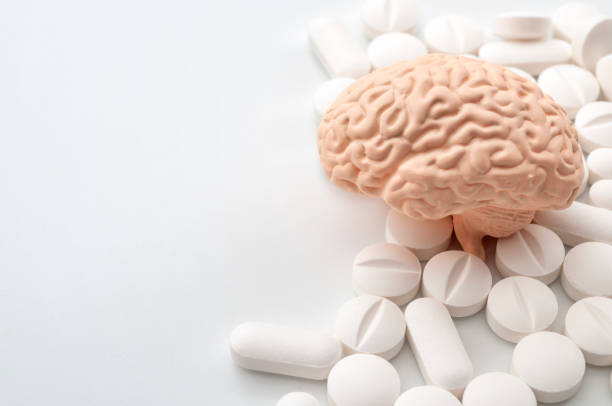Effective Neuropathy Treatment Guide For 2025: What Really Helps Against Nerve Pain?
Neuropathy affects millions of people worldwide, causing debilitating nerve pain that can significantly impact daily life. As we move into 2025, new treatment approaches and refined traditional methods offer hope for those seeking relief from peripheral neuropathy symptoms. Understanding the available treatment options and their effectiveness helps patients make informed decisions about managing their condition. This comprehensive guide explores evidence-based treatments that have shown promise in reducing nerve pain and improving quality of life for neuropathy patients.

What Are The Typical Symptoms Of Neuropathy?
Neuropathy symptoms vary depending on which nerves are affected, but several common signs indicate nerve damage. Patients typically experience tingling, numbness, or burning sensations in their hands and feet. Sharp, stabbing pains often worsen at night, while muscle weakness may develop in affected areas. Many people describe the sensation as wearing invisible gloves or socks, with reduced ability to feel temperature changes or touch sensations.
Additional symptoms include balance problems, coordination difficulties, and increased sensitivity to light touch. Some patients experience muscle cramps, twitching, or complete loss of reflexes in affected limbs. Early recognition of these symptoms enables faster diagnosis and treatment initiation, potentially preventing further nerve damage and improving long-term outcomes.
Neuropathy Treatment: What Really Helps Against Nerve Pain?
Several proven treatments effectively manage neuropathy pain, with success rates varying among individuals. Prescription medications form the foundation of most treatment plans, including anticonvulsants like gabapentin and pregabalin, which specifically target nerve pain pathways. Tricyclic antidepressants such as amitriptyline and nortriptyline also demonstrate effectiveness in managing chronic nerve pain.
Topical treatments offer localized relief without systemic side effects. Capsaicin cream, lidocaine patches, and compounded topical medications can reduce pain intensity in specific areas. Physical therapy plays a crucial role in maintaining muscle strength, improving balance, and preventing further complications. Regular exercise, when appropriately modified, helps maintain circulation and nerve function while reducing pain sensitivity.
Alternative therapies show promising results for many patients. Acupuncture has demonstrated effectiveness in clinical studies, particularly for diabetic neuropathy. Transcutaneous electrical nerve stimulation (TENS) units provide non-pharmacological pain relief, while massage therapy can improve circulation and reduce muscle tension associated with neuropathy.
Neuropathy Treatment 2025
The treatment landscape for neuropathy continues evolving with new technologies and refined approaches. Precision medicine is becoming more prevalent, with genetic testing helping identify optimal medication choices for individual patients. Advanced imaging techniques now provide better visualization of nerve damage, enabling more targeted treatment strategies.
Regenerative medicine approaches are gaining attention in 2025. Stem cell therapy and platelet-rich plasma injections show potential for promoting nerve regeneration, though these treatments require further research to establish long-term effectiveness and safety profiles. Neurostimulation devices have become more sophisticated, offering programmable settings that adapt to changing pain patterns throughout the day.
Digital health integration plays an increasingly important role in neuropathy management. Smartphone applications help patients track symptoms, medication effectiveness, and pain patterns, providing valuable data for healthcare providers to optimize treatment plans. Telemedicine consultations improve access to specialized neuropathy care, particularly for patients in remote areas.
Effective Neuropathy Treatment Options
Comprehensive neuropathy treatment requires a multimodal approach addressing both symptoms and underlying causes. For diabetic neuropathy, strict blood glucose control remains paramount, as elevated blood sugar levels accelerate nerve damage. Nutritional deficiencies, particularly B vitamins, should be corrected through supplementation when indicated.
Lifestyle modifications significantly impact treatment success. Proper foot care prevents complications in patients with decreased sensation, while smoking cessation improves circulation and nerve healing potential. Alcohol reduction is essential, as excessive consumption can worsen neuropathy symptoms and interfere with medication effectiveness.
Interventional pain management procedures offer options for severe cases. Nerve blocks, spinal cord stimulation, and intrathecal drug delivery systems provide relief when conservative treatments prove insufficient. These procedures require careful evaluation by pain management specialists to determine appropriate candidates and optimize outcomes.
| Treatment Provider | Services Offered | Cost Estimation |
|---|---|---|
| Mayo Clinic | Comprehensive neuropathy evaluation, medication management, physical therapy | $300-800 per consultation |
| Cleveland Clinic | Multidisciplinary pain management, nerve conduction studies, interventional procedures | $250-600 per visit |
| Local Pain Management Centers | Medication management, nerve blocks, TENS therapy | $150-400 per appointment |
| Physical Therapy Clinics | Exercise programs, balance training, functional improvement | $75-150 per session |
| Acupuncture Practitioners | Traditional and electroacupuncture treatments | $60-120 per session |
Prices, rates, or cost estimates mentioned in this article are based on the latest available information but may change over time. Independent research is advised before making financial decisions.
Conclusion
Effective neuropathy treatment in 2025 requires a personalized approach combining traditional and emerging therapies. While no single treatment works for everyone, the expanding range of options provides hope for improved pain management and quality of life. Success depends on early intervention, consistent treatment adherence, and ongoing communication with healthcare providers. Patients should work closely with their medical team to develop comprehensive treatment plans that address both symptoms and underlying causes, incorporating lifestyle modifications alongside medical interventions for optimal outcomes.
This article is for informational purposes only and should not be considered medical advice. Please consult a qualified healthcare professional for personalized guidance and treatment.




